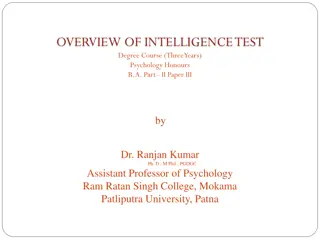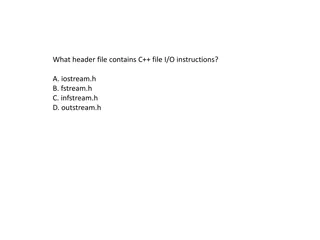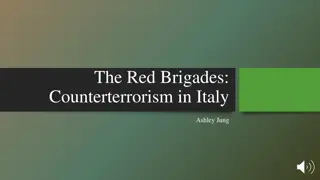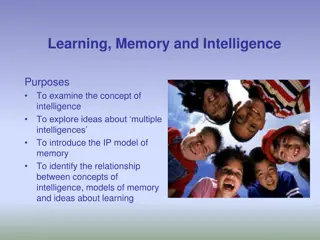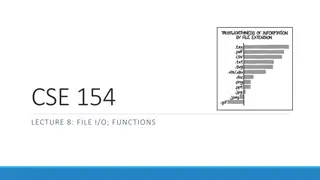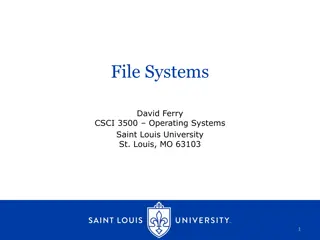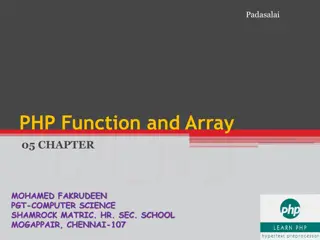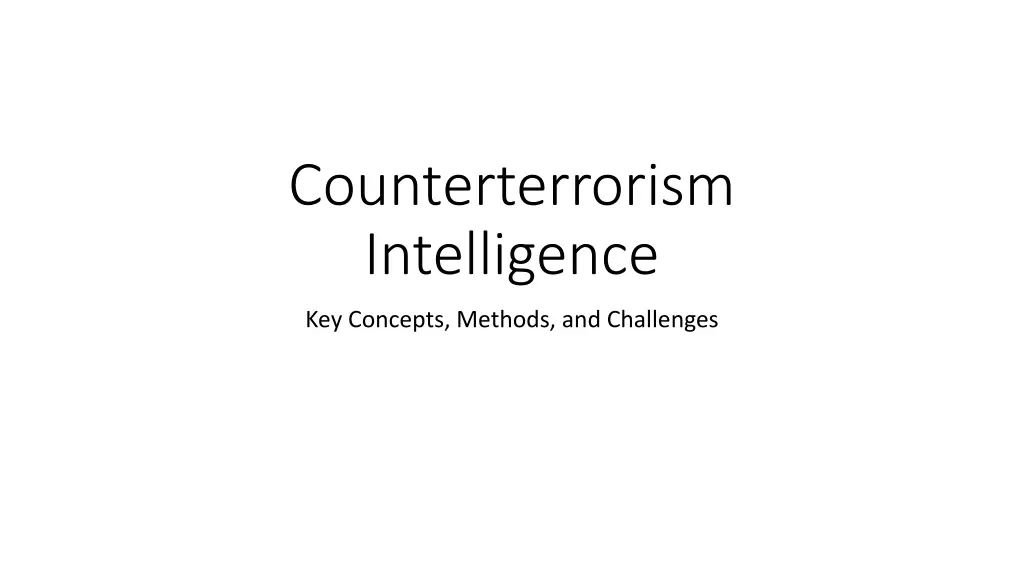
Key Concepts and Challenges in Counterterrorism Intelligence
Explore the world of counterterrorism intelligence, focusing on the collection, analysis, and dissemination of information to prevent and respond to terrorist activities. Learn about the goals, sources, intelligence cycle, technological tools, key players, and challenges in this crucial field.
Download Presentation

Please find below an Image/Link to download the presentation.
The content on the website is provided AS IS for your information and personal use only. It may not be sold, licensed, or shared on other websites without obtaining consent from the author. If you encounter any issues during the download, it is possible that the publisher has removed the file from their server.
You are allowed to download the files provided on this website for personal or commercial use, subject to the condition that they are used lawfully. All files are the property of their respective owners.
The content on the website is provided AS IS for your information and personal use only. It may not be sold, licensed, or shared on other websites without obtaining consent from the author.
E N D
Presentation Transcript
Counterterrorism Intelligence Key Concepts, Methods, and Challenges
Counterterrorism Intelligence refers to the collection, analysis, and dissemination of information aimed at preventing, mitigating, or responding to terrorist activities. It involves identifying threats, understanding the motives, methods, and networks of terrorist groups, and providing actionable insights to policymakers, law enforcement, and security agencies.
Goals of Counterterrorism Intelligence Identify and monitor terrorist groups. Disrupt plots before execution. Analyze trends and predict future threats. Support policy and operational decision-making.
Sources of Intelligence Human Intelligence (HUMINT): Informants, defectors, undercover agents. Signals Intelligence (SIGINT): Intercepting communications, electronic surveillance. Geospatial Intelligence (GEOINT): Satellite imagery, geographic data. Open-Source Intelligence (OSINT): Publicly available information, media. Cyber Intelligence: Monitoring online platforms, tracking digital footprints.
Intelligence Cycle 1. Direction: Setting priorities, identifying intelligence needs. 2. Collection: Gathering data from diverse sources. 3. Processing: Translating, decrypting, and organizing data. 4. Analysis: Interpreting information to generate actionable insights. 5. Dissemination: Sharing findings with decision-makers.
Technological Tools in Counterterrorism Intelligence AI and Machine Learning for threat prediction. Big Data Analytics for detecting patterns. Biometrics and facial recognition technologies. Cybersecurity measures to counter online extremism.
Key Players in Counterterrorism Intelligence National Intelligence Agencies (e.g., CIA, MI6, FSB). Law Enforcement (e.g., FBI, Interpol). Military Intelligence Units. International Collaboration (e.g., UN, NATO).
Challenges in Counterterrorism Intelligence Balancing security and civil liberties. Handling vast amounts of data effectively. Countering misinformation and propaganda. Cross-border cooperation and information-sharing barriers. Jurisdictional Differences: Variations in national laws about data privacy and information sharing. Inter-agency Rivalries: Competition between agencies can discourage collaboration. Distrust Among Nations: Fear that shared intelligence could be leaked, misused, or exploited.
Ethical and Legal Considerations Surveillance vs. Privacy Rights. Use of enhanced interrogation methods. Accountability for misuse of intelligence.
Future of Counterterrorism Intelligence Increasing role of Artificial Intelligence. Globalization of counterterrorism efforts. Evolving terrorist strategies and countermeasures.



